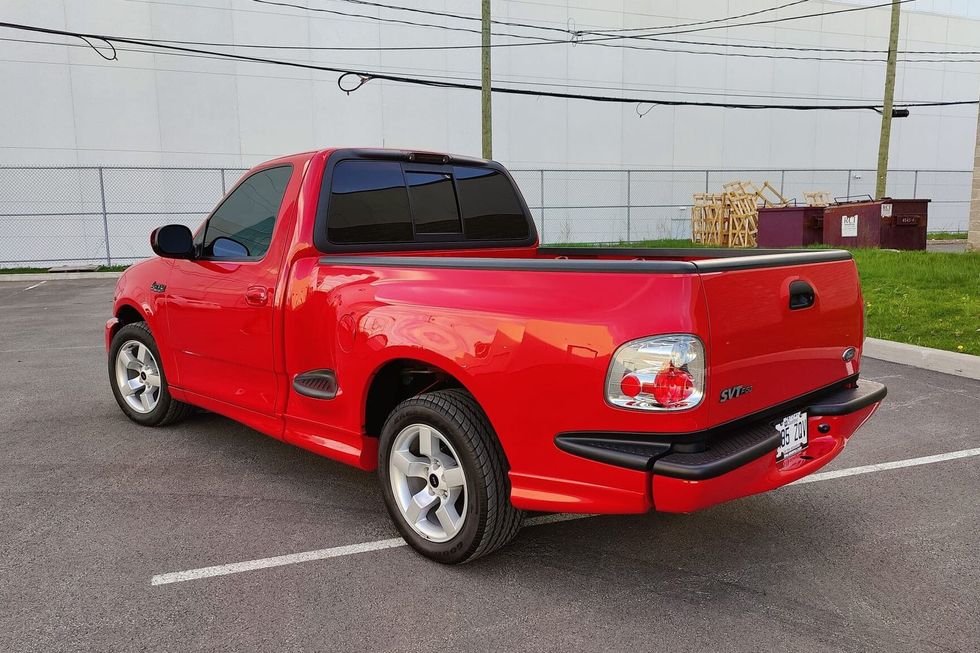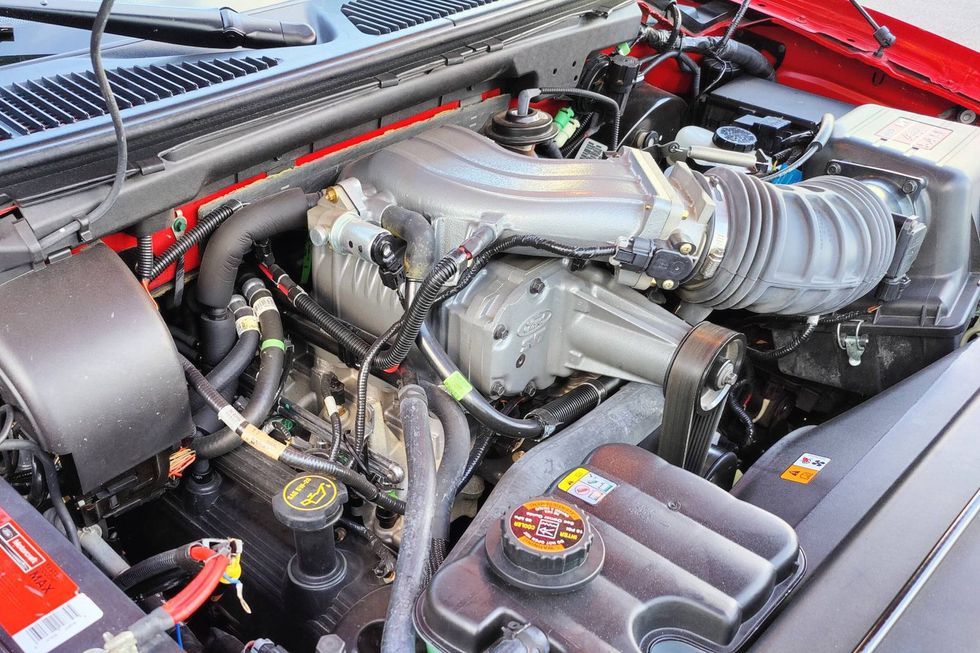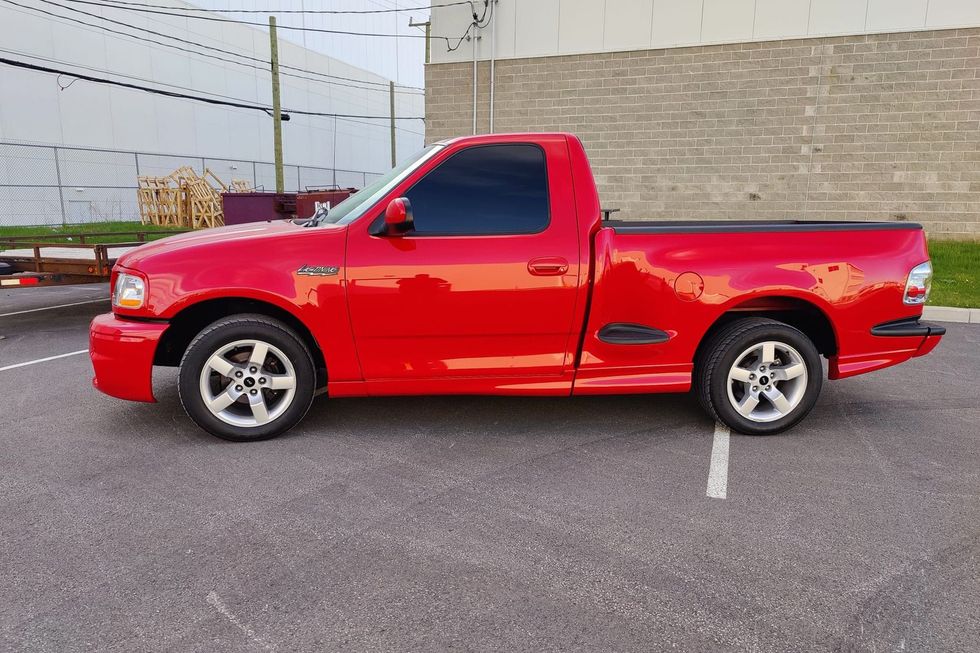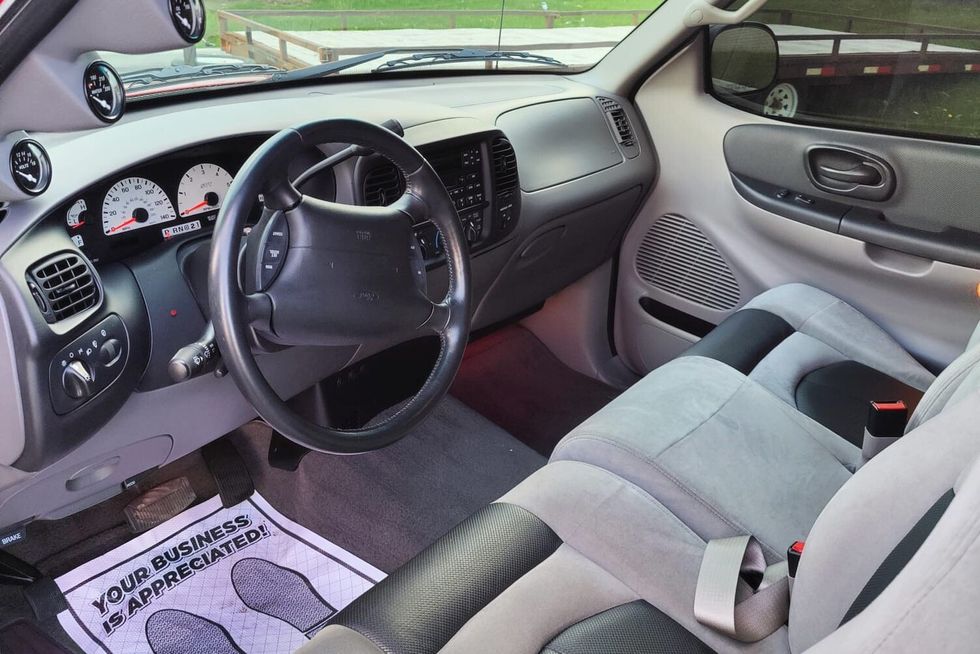Medium-Priced Luxury - 1953 Chrysler Windsor DeLuxe
Long on comfort and style, the 1953 Chrysler Windsor DeLuxe is a handsome car loaded with many high- quality details throughout
09/24/2018


About 25 years ago, Jim Flint of Biddeford, Maine, answered a classified ad in the Portland Press Herald for a 1953 Chrysler Windsor DeLuxe. Jim had owned a similar Windsor DeLuxe while in college and knew exactly what kind of Chrysler was being advertised. A phone call and subsequent trip to West Kennebunk, and Jim was unknowingly on his way to owning another Windsor DeLuxe. What began as a trip to take a curious look turned into something else as soon as he saw the car's condition.
"It was in very good shape. It had only about 20,000 miles on it, having been stored for a long time," Jim remembers. "The folks who stored it, the daughter of the original owner, covered the entire car with wax, but didn't buff it off, so the paint was well-protected. The fellow I bought it from, the third owner, replaced the belts and hoses, plugs and points, changed the oil, etc. and then listed it for sale."
The Windsor was almost exactly like the one Jim drove in college, which was handed down to him by his grandparents. Mainly driven by his grandmother, the Windsor was given to Jim by his grandfather after she passed away. That Windsor had a few more options like a radio, power steering and factory seat covers, but this one was all there and ready to roll. Jim decided he had to have a Windsor DeLuxe once more. "Initially, when I saw the ad, I only meant to look at the car, but when I beheld it, I just had to have it! I cashed in all my savings bonds, rolled up all my change, and barely managed to come up with the money to buy it."
Chrysler was looking forward with its 1953 lineup. The two-piece front windshield was a thing of the past. For the first time since the Chrysler Airflow, a seamless single pane of glass made for an unobstructed view ahead. Changes in the body moved the previous year's style even further along, taking advantage of the Chrysler's long wheelbase and making the cars appear even longer and sleeker. The 1953 Chrysler lineup ran the gamut from the base Windsor, all the way to the top-of-the-line New Yorker.
The Windsor boasted that it was the lowest priced of all Chryslers for 1953. While the Windsor may have cost less than the fancier and more upscale New Yorker models, it now shared the same wheelbase with the tonier New Yorker. The short-wheelbase cars measured out at over 125 inches in length, with the long-wheelbase cars stretched to almost 140 inches. Available engines included the tough and smooth five-bearing 264.5-cu.in. L-head straight-six that produced 119 horsepower, and the powerful 180-hp 331-cu.in. Hemi V-8.
Riding in the middle of the pack was the Windsor DeLuxe, which touted fine car performance, comfort, style and beauty at a medium price. The Windsor DeLuxe was available as a two-door Newport hardtop; convertible; or four-door, six-passenger sedan. Standard equipment included directional signals, two-speed electric windshield wipers to clear the one-piece front windshield, luggage compartment courtesy lamp and full wheel covers. The Windsor DeLuxe went head-to-head with the Buick Super, Hudson Hornet, Oldsmobile 98 and corporate relative, De Soto Firedome. All told, Chrysler built 84,469 Windsors for the 1953 model year, of which 52,277 were of the DeLuxe series.
So, once again, Jim ended up owning and driving another 1953 Chrysler Windsor DeLuxe. Its overall condition inside and out is very good, with the carpet in front showing wear from being covered with floor mats for such a long time. Jim uses Meguiar's products on the original exterior paint and chrome, while Lemon Pledge keeps the dash and vinyl looking new.
To ensure reliability, Jim maintains a regular maintenance schedule, which includes an oil and filter change every 1,000 miles using Shell Rotella
10W-30 oil for its higher-than-normal zinc content. Jim initially drove the car with bias-ply whitewalls, but switched over to a set of radial blackwalls and reports vast improvement in driveability. There was a problem with keeping air in the tubeless tires at first, but his mechanic came up with a valve stem solution that kept the air inside the tires where it belongs.
Jim says the tires have been the only major maintenance item, at about $1,000 in total cost involved. He did have to replace the exhaust manifold gasket when he took the car out of storage, but other than that, routine maintenance has kept the old Windsor ready for trouble-free driving. The six-cylinder engine runs smooth and quiet; the 264.5-cu.in.
Spitfire engine was known for its determined operation and longevity.
The flathead engine starts right up from cold with a single tap on the accelerator, taking care to not flood the engine with its single-barrel carburetor when it's warm. While the engine was never known for its neck-snapping acceleration from a dead stop, Jim says that, once under way, the Spitfire lives up to its name. "Between 35 MPH and, say, 65 MPH, it moves out smartly." Now that turnpike speeds have been increased to 70 MPH, Jim tries to keep the Chrysler on secondary roads for comfortable and confident cruising.
Jim guesses the engine is loafing along at about 2,500 RPM at typical cruising speed, and that while the Windsor is certainly capable of higher velocities, it wasn't built to win the Indy 500. "It is entirely comfortable at 55-60 MPH and can do 70, but somehow, it just doesn't seem right to go that fast. I had it up to 80 once and had no problem, but I don't make a practice of it. Fifty-five miles per hour is the best for both me and the car. Well, except on a turn. It doesn't exactly corner like a cat!"
The odometer just recently clicked over to 35,000 miles, and Jim noticed that the more he drives the car, the fewer problems arise. A previously adhered-to annual limit of 1,000 miles was scuppered. "I used to set the trip odometer at zero in the spring, and when I reached 1,000, I'd store the car away. Now, I find, it seems to run better and have fewer problems if it gets driven more than that, so I just use it and don't worry about the mileage."
Starting late in the 1953 model year, the fully automatic PowerFlite transmission started to appear, but no mention of a 1953 Chrysler product can be made without reference to the famous semi-automatic transmission, the Fluid-Matic, with its four forward speeds.
According to Jim, "The Fluid-Matic has a clutch, but there's no direct mechanical connection between the engine and the wheels, rather there's a fluid coupling. You use the clutch to move the shift lever between reverse and two forward ranges, each of which has two speeds. I understand the transmission is actually a two-speed unit with an overdrive bolted on, giving four forward speeds. The low range, up and away from you with the shift lever, is very low and not often used. For normal driving, most start off in high range, or third gear.
"To take off, you depress the clutch and select high range (all the way down with the shift lever). Leaving your foot on the brake, you ease the clutch out, but you don't have to be very careful about that, as it won't stall. Step on the gas and when you're going around 20 MPH or so, let off until you hear a sort of 'click.' Then you're in fourth gear. Fourth is good for any speed from around 10 to 80 MPH.
"You can start in low range with first, shift to second with the gas pedal, then shift with the clutch into high range, and you'll be in fourth. Or you can start in low range, shift with the clutch to high range and catch third, then shift with the gas pedal to fourth. Second and third seem quite close together, though they are not identical. Downshifting happens automatically within ranges, and flooring the accelerator in fourth will cause a downshift into third. There is no 'park,' so when parking, you must always use the hand brake."
The Windsor DeLuxe is the only collector car Jim owns right now, perhaps because the big Chrysler offers so much car in a single original package. While there are a lot of little things to like about the Windsor DeLuxe, they all add up to the main reasons to own a 1953 Chrysler. "It's classy without being ostentatious, big but economical, easy to drive, comfortable to ride in, cruises nicely, especially since I put radial tires on, and I love the way it takes a hill," Jim proudly tells us.
If there's anything not to like, it's that the Spitfire engine is slightly sedate in the acceleration department, but even so, Jim doesn't plan on changing a thing on the old Chrysler. Some nested birds fouled up a section of paint and chrome while the car was in storage, and it has its share of nicks and dings that might someday warrant a fix, but for the time being, Jim is just keeping the car as it was and having a good time in the process. All he can hope for is that everyone else enjoys the Chrysler Windsor as much as he and his grandparents have before him.
"This has been such a fun car to own," Jim says. "Two of my nieces have been transported from their weddings to their receptions in it. It always scores a hit when people see it. I'm struck by the quality of its construction. From a marketing perspective, it's interesting to see what it competed against in 1953. The Buick Super was close to the Windsor's price and was about the same size, but had a much larger and more modern engine and a fully automatic transmission as well as racier styling. You wonder why anyone would buy one of these when they could just as easily have a Buick Super.
"Then, I remember my grandfather. He wouldn't have been comfortable with a fully automatic transmission--he wanted more input in the operation of a car. And a larger engine would not have interested him. He wouldn't have cared two pins about the acceleration and spending more money on gas. Just to have that would have seemed like a waste to him. So there was a market for these cars. Best of all, it's been a blast owning it. I hope whoever owns this Windsor after me gets as much of a charge out of it as I have."
Forget Ford’s groundbreaking electric truck for a moment to consider this 2001 Ford SVT F-150 Lightning now offered on Hemmings Auctions. Instead of the dual permanent-magnet motors found in the current electric Lightning, the 1999-2004 SVT Lightning featured a supercharged version of Ford’s 5.4-liter “modular” OHC V8. Rated at 380 horsepower in the 2001-’04 models, it was good enough to make a stock lightning a formidable opponent on the street as well as at the strip.
A follow-up to the original 1993-’95 F-150 Lightning, which was a high-performance version of a standard F-150, the second-generation SVT super truck presented as a more thoroughly developed model with a lot more exclusive components that further differentiated it from the rest of the F-Series lineup. Beyond the engine, the entire suspension and braking system, not to mention aerodynamic body add-ons, were part of the Lightning package from 1999 through 2004. Exclusive interior components were also part of the package.
At the heart of this SVT Lightning is its iron-block 5.4-liter SOHC, 16-valve V8 with a supercharger and an intercooler. The blower helped it deliver 380 horsepower and 450 lb-ft of torque in 2001, up some 20 horsepower and 10 lb-ft from the ’99 and 2000 models. The Eaton supercharged engine delivered peak boost of 8.0 psi and the engine featured an 8.4:1 static compression ratio, down from the standard 5.4 V8’s 9.0:1, which was rated at 260 horsepower and 350 lb-ft.
Power reached the rear 18-inch cast aluminum-alloy wheels via a four-speed automatic, an aluminum driveshaft and a beefy 9.75-inch, limited-slip rear axle with an acceleration-friendly 3.73:1 final-drive ratio, another upgrade for 2001. Car and Driver magazine reported a 0-60 mph time of 5.2 seconds and a quarter-mile in an E.T. of 13.8 seconds at 104 mph—impressive numbers for a 4,600-pound truck. Top speed was a drag-limited 142 mph.

Trucks generally require a suspension that can handle a full load in its bed while also providing competent driving while empty. But if you fancy one designed to a sports-car standard, then something has to give. In the case of the second-gen Lightning, Ford dropped its payload capacity to a mere 800 pounds. A standard 2001 F-150 Styleside carried a 3,180-pound payload rating, while an F-150 Flareside was rated at 2,005 pounds, some two-and-a-half times the Lightning, which featured the short-bed Flareside body. Towing capacity, likewise, was reduced from 8,800 pounds to 5,000 in the Lightning. But the Lightning’s strengths were never its payload or towing capacities, but it’s ability to perform like a sports car.
As a 21st century performance vehicle, however, the second-gen Lightning was also equipped to handle. A half-inch drop at the front was accompanied by SVT-specific coil springs and Bilstein shocks along with an exclusive 31-mm solid anti-roll bar. SVT’s influence continued at the rear with Lightning-specific five-leaf springs and a 23-mm solid anti-roll bar. The Bilstein setup at the rear included the right-rear shock staggered toward the front of the truck to reduce axle hop under heavy acceleration. The four-wheel antilock disc brakes were cribbed from the three-quarter-ton F-250, with 12.1-inch front rotors at the front and 13.1-inch discs at the rear.

As the years go on, fewer and fewer clean, unmolested low-mileage examples are out there, which is why this 2001 Ford SVT F150 Lightning now on Hemmings Auctions caught our attention. Showing just 5,525.5 miles on its odometer at the time of submission, it is said to be in “mint” condition and have an “immaculate” finish in the seller’s words. No modifications are noted to any part of the vehicle. The 18-inch factory alloys don’t appear to have any curb rash, though the Goodyear performance tires may be original. About the only deviations from stock are the tinted windows.
The latest electric-only F-150 Lightning is certainly a quick vehicle in its own right, but this 2001 edition from the engineers at SVT was built for excitement, not range. It was made with an old-school muscle-car vibe along with modern handling and braking. Which Lightning would you look good behind the wheel of?
Take a look at this second-gen Lightning on Hemmings Auctions before the bidding ends.

Spring is here. As the snow melts and the daffodils bloom, it’s time for many vintage cars to emerge from winter hibernation and get back on the road. Thinking of adding to the collection? We have 10 vehicles in spring-like shades of yellow – including cars and trucks, U.S. and European – to catch your eye.

















































